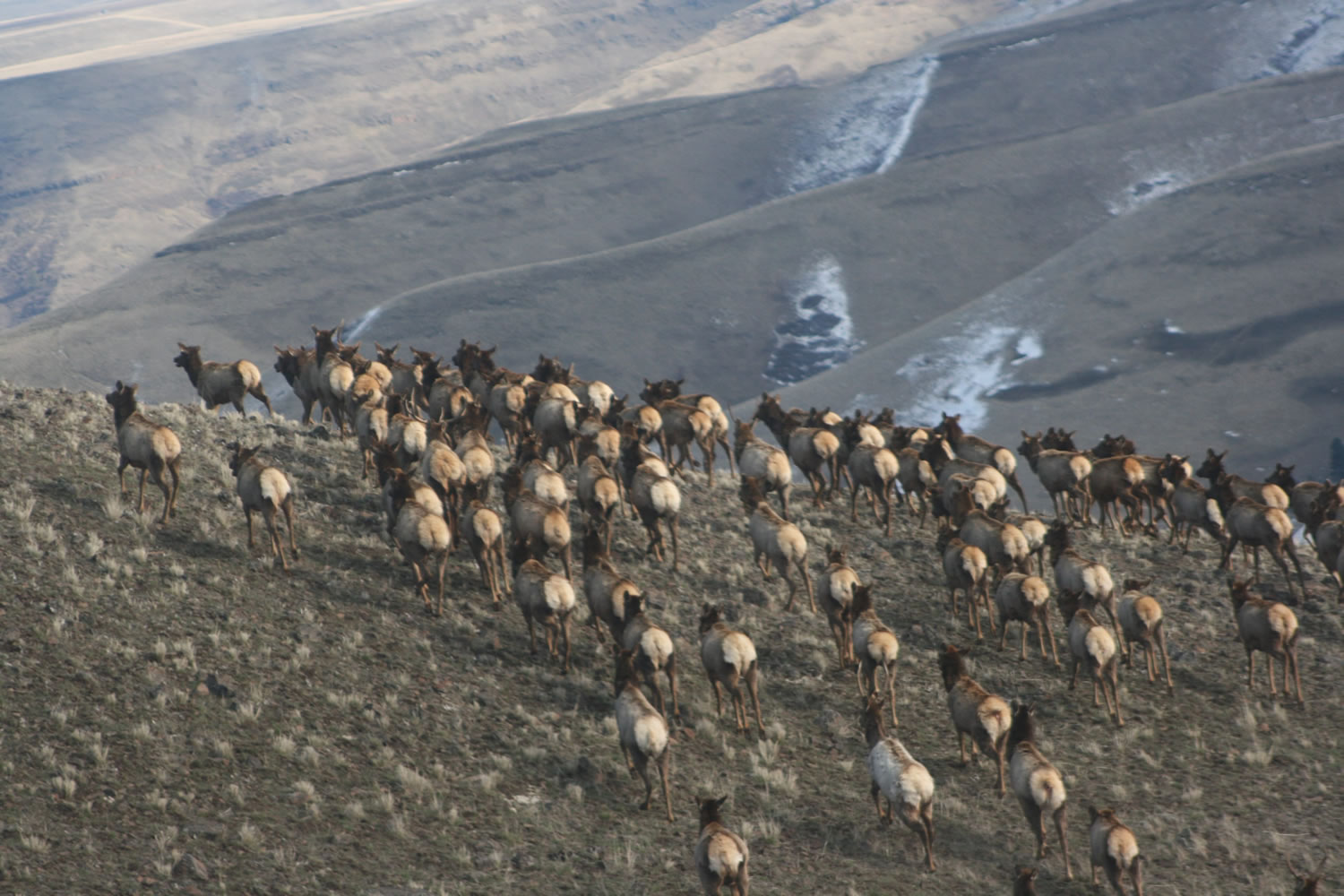Elk hunters in southeastern Washington have something to be happy about.
Recent surveys in the Blue Mountains showed the elk population there with healthy levels of spikes and mature bulls.
The Washington Department of Fish and Wildlife recently completed aerial surveys of the Blues and estimated an elk population of 5,774.
“The number is 500 to 600 higher than we have experienced the past few years,” said Paul Wik, the department’s district wildlife biologist stationed at Clarkston.
The count, as it does every year, likely includes 500 or so elk that spend the summer and fall in Oregon. Wik said because of the terrain that borders Oregon, the flights don’t stick strictly to state lines.
“The state line doesn’t follow desirable survey unit boundaries,” he said.
Surveyors didn’t count as many bulls this year but the survey model the department uses adjusted the number upward. That is because many animals were seen in timber. Since spotting elk in timber and dense cover is more difficult than seeing them on open hillsides, the model assumes there are more elk there than were spotted by human eyes.
Wik said lower than normal snow levels and the presence of shed hunters may have compelled elk to seek cover. It’s unknown if shed hunters have an effect on elk that are trying to take advantage of green-up, new grass emerging on sun soaked slopes.
“They (shed hunters) are pretty prevalent out there. Trying to quantify what kind of effect they have is difficult to do.”
Because the model predicted healthy numbers of young elk and mature bulls, Wik said that should translate into good opportunity for hunters next fall seeking spikes and those after branch antlered bulls. In Washington, hunters must be drawn in a lottery to hunt mature bulls with branching antlers. Those who purchase over-the-counter tags are limited to spike bulls — younger animals without branching antlers.
“Calf numbers are up and with that I suspect there should be more spikes available for harvest this fall,” he said.
Wik said much of the habitat is in good condition, especially in places that burned in 2005 and 2006. But he added there are places that have become dense and overgrown.
“Some places could use some fire, such as the Wenaha (Unit),” he said.
Washington conducts its elk surveys in the Blue Mountains during green-up when elk can easily be seen grazing on the fresh growth. Idaho does its surveys during the winter, when snow makes the animals easier to spot whether they are on open south-facing slopes or in timber.
Biologists for the Idaho Department of Fish and Game’s Clearwater Region were largely stymied in their efforts to count elk in the Elk City Zone last winter. Snow was late to arrive, said wildlife biologist Dave Koehler at Lewiston. When it did start snowing in February, the storms were frequent and kept aircraft grounded. By the time the weather cleared, he said, it was too lake to conduct the counts.
Department officials elected to delay the survey by a year for fear that doing them late would have produced inconsistent data.
“The Elk City Zone is still a top priority to get flown and we will fly it next winter,” he said.
Biologists were able to get in one day of flying in Unit 15. Koehler said they recorded a calf-to-cow ratio 22 calves for every 100 cows.
“It’s not a great calf-to-cow ratio but it’s not as bad as we have seen elsewhere and, given the small sample size, we probably don’t want to put a lot of stock into it.”



